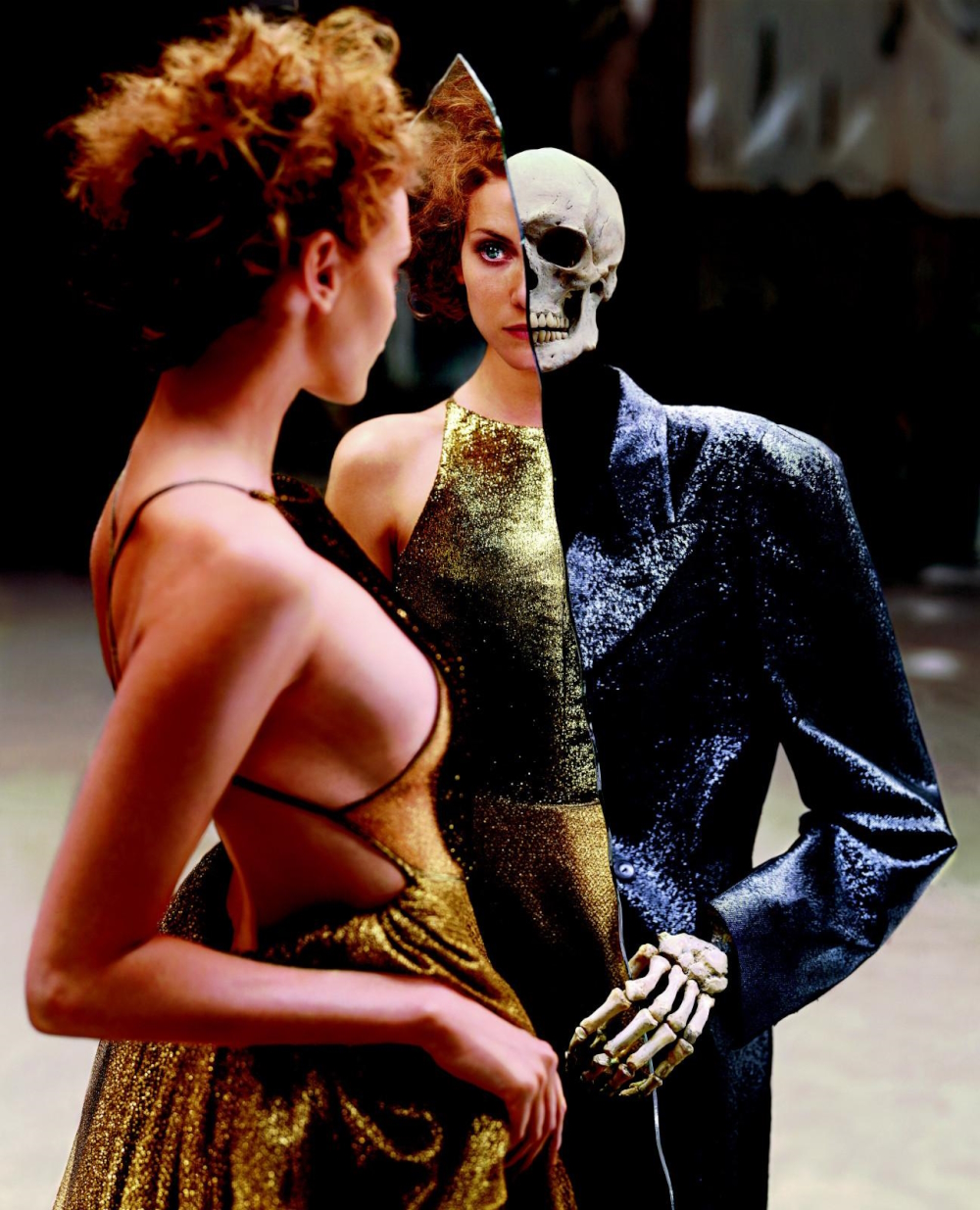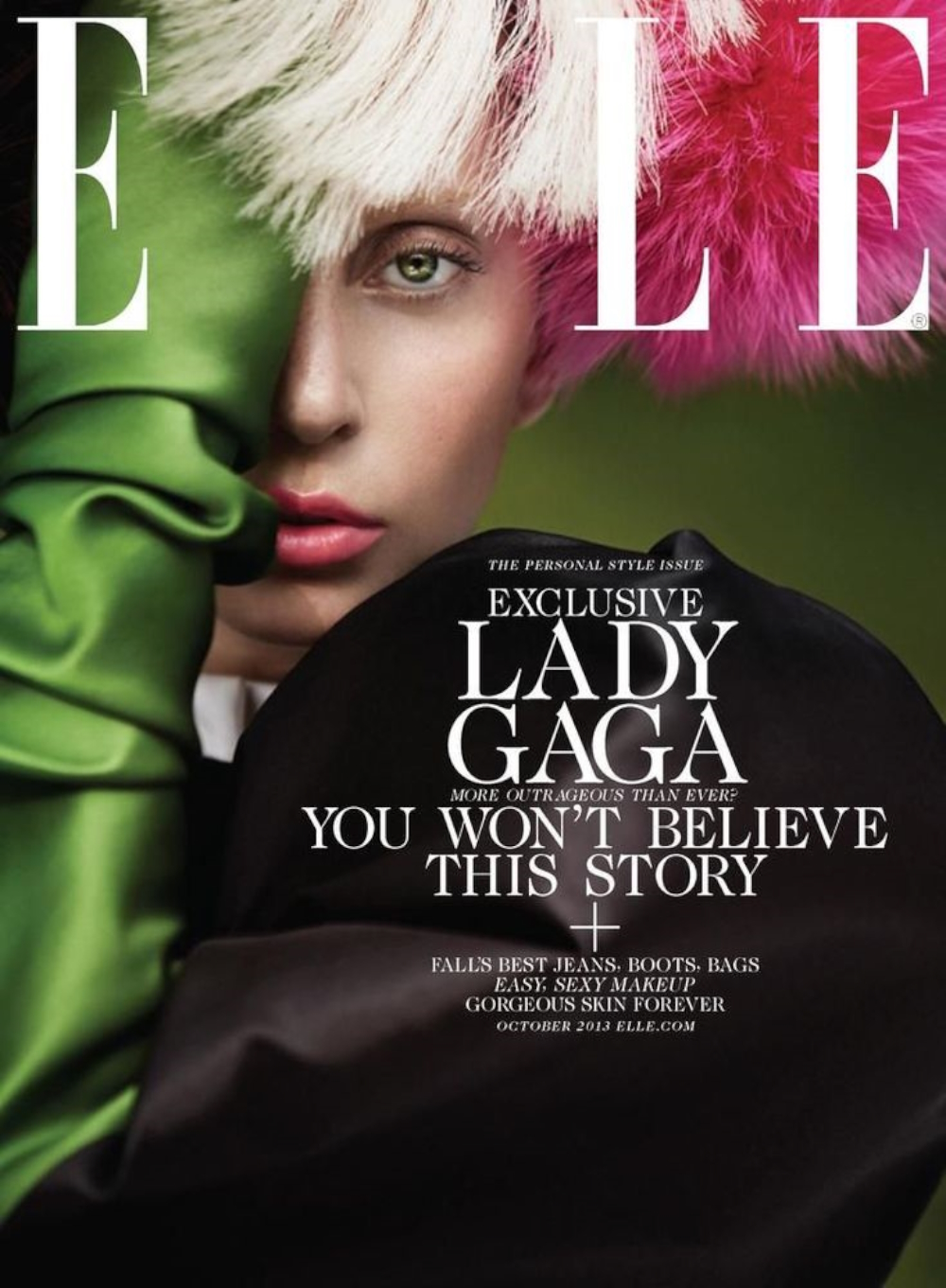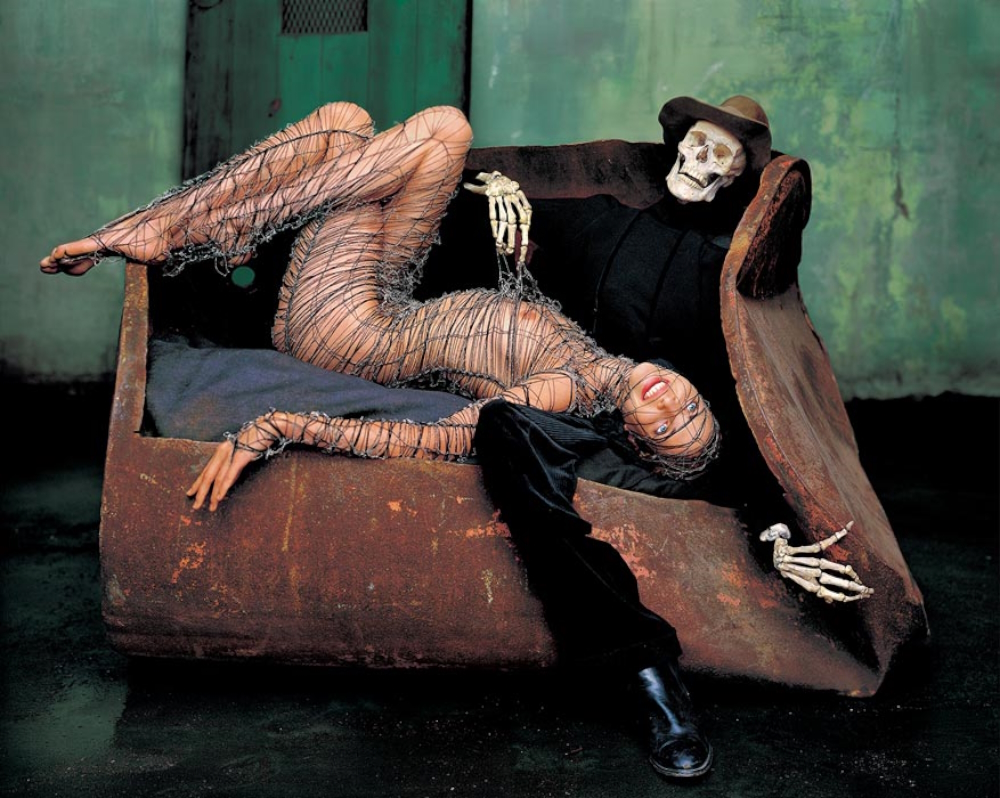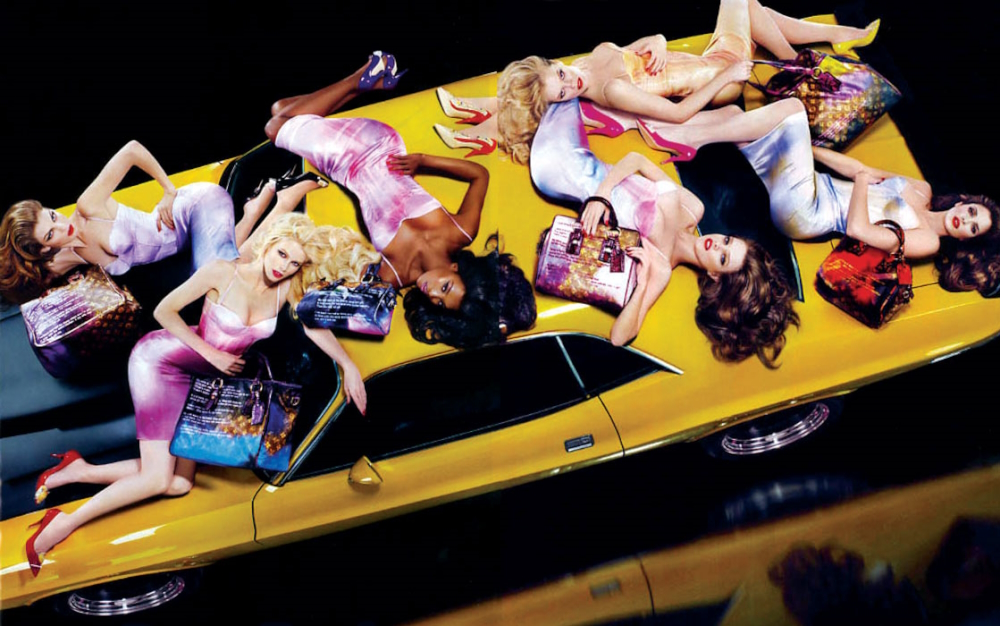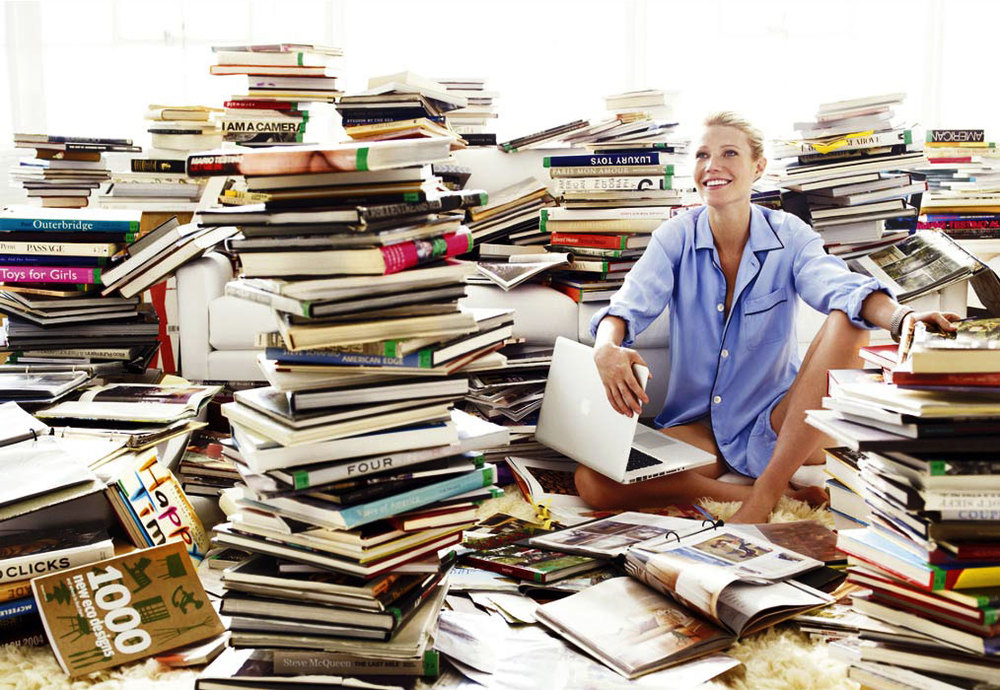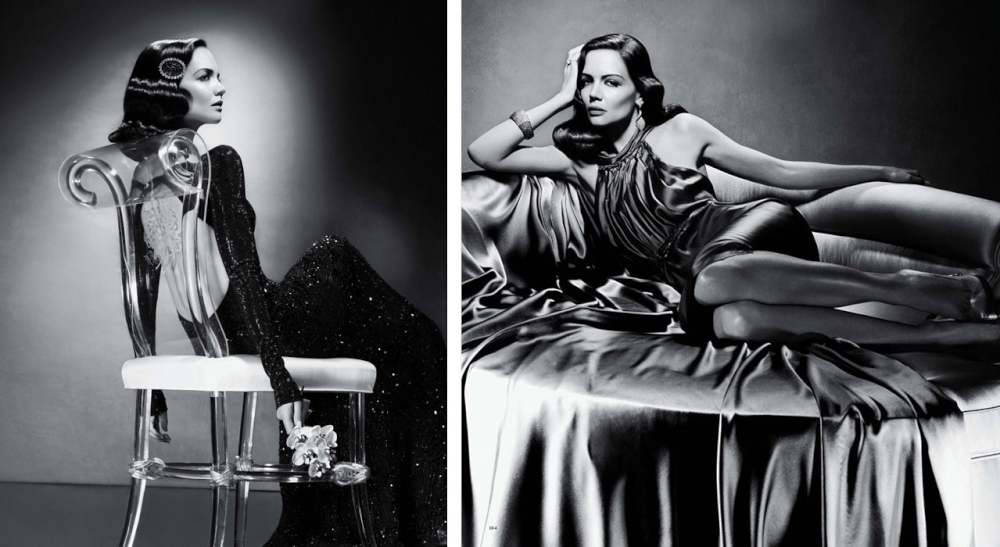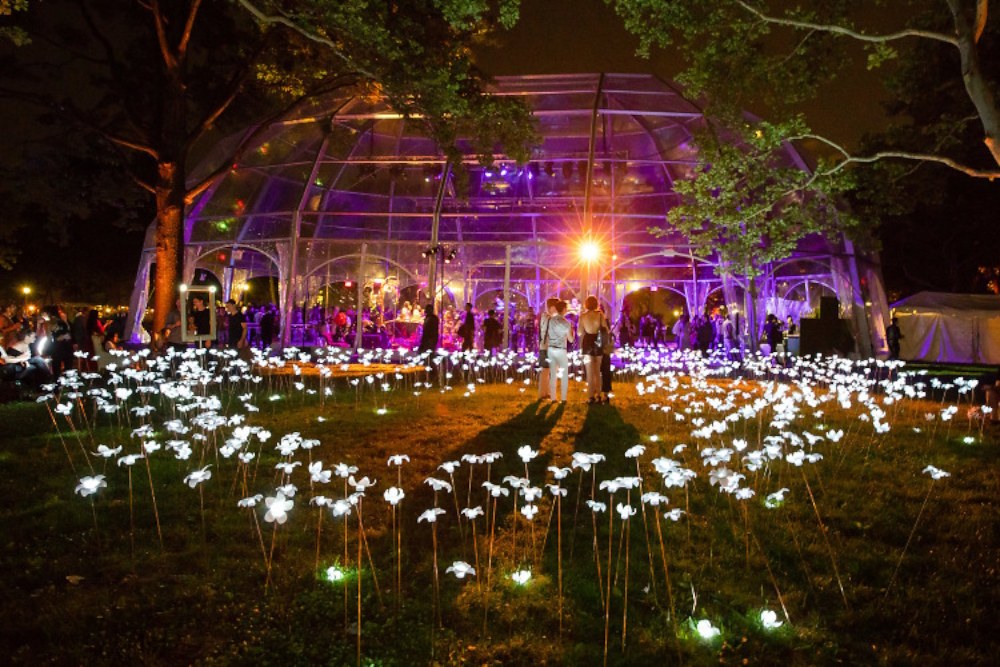Marla Weinhoff
world-renowned Set / Production Designer (Lady Gaga et al.)
US
Elle, Harper’s Bazaar, New York Times, The New Yorker, Vogue, Beyonce, David Bowie, Lady Gaga, Madonna, Prince, Taylor Swift. Even a brief excerpt from the high profile client list of this company owner speaks up for itself already. She heads a studio that specializes in set & production design for tv/feature, commercial, advertising, editorial, event, performances and music videos. With her decades of deep background and experience in Haute Couture and music, it’s no surprise that fashionista.com calls her „an iconic creative“!
Marla Weinhoff
world-renowned Set / Production Designer (Lady Gaga et al.)
US
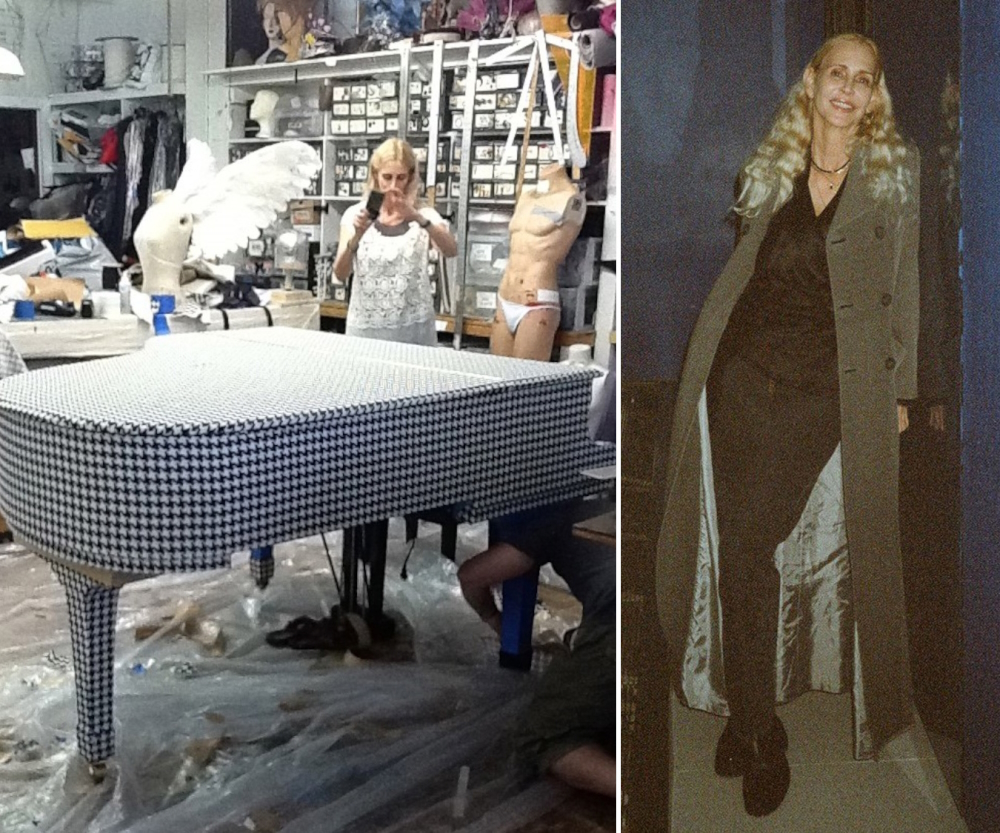
„Impossible is nothing!“ The slogan of Adidas‘ legendary ad campaign that made history in its genre could be Marla Weinhoff’s too. The American has to lift ideas off the ground however unusual they are and quite often on short term. Just one example: As Haus of Gaga’s art director (since 2011) she was called by Lady Gaga in hinsight of her television performance of the song ‚The Edge of Glory‘ at American Idol‘s finale in 2011. The world famous musician said according to la411.com: „I want to have this big mountain like a cliff, and I want to be at the edge of this cliff, and then I want to jump off it at the end.“ So it was Mrs. Weinhoff’s duty to design the formation that had to be quickly movable and find somebody to sculpture as well as cast it. The video recording that can be watched further down on the right side in the YouTube-section proves that the mission was accomplished of course.
Carrying somebody else’s visions and pushing it is one side of her job. The other: developing own concepts, based on personal ideas and expertise are more common. How can such a 360 degree service be described in a few sentences? „In many productions the set design is the most important part of the concept“, knows trendland.com. „The overall look of the set gives the audience information about the director’s concept and creates a new home for the model to interact with. The set gives the photographer its shots by creating a range of frames through which to tell the story of the campaign.[...] Creating these worlds is a huge production especially when you think that they are built up for one day of shooting and then must come down. But recreating commercial spaces like supermarkets or highly official spaces such as NASA for example is often necessary due to the exorbitant price of blocking such a facility for an entire day.“ Therefore the magnitude of a set/production designer’s job is easy to picture.
Marla Weinhoff received a B.A. and M.A. after having studied Anthropology and Design at the Berkeley University of California. The graduate started working as a decorative painter and fabricator. Robert Currie (1948-1993), „an internationally known designer of commercial and residential interiors, sets for television and print advertisements“ (The New York Times) „taught me everything“ she revealed on newelprops.com. Out of his countless commissioned works for Giorgio Armani, Chanel, Christian Dior, Yves St. Laurent, Valentino et al. the tv-commercial for Calvin Klein’s Obsession is the most memorable. Mr. Currie „was a master of the unexpected, using unusual textures and creating dramatic effects by contrasting simple objects with extravagant ones“ (nytimes.com). The busy one who worked with the first rate of professionals including doing set designs for the fashion & portait photographer Richard Avedon (1923-2004). During an ad-shot for Versace Mrs. Weinhoff got to know this legend whose „fashion and portrait photographs helped define America's image of style, beauty and culture for the last half-century“ (The New York Times). That wasn’t just the start of a lifelong friendship, but she became his exclusive set designer too.
In 1990 the lover of Japan and the visual aesthetics of filmmakers like Ozu, Kurosawa, Bertolucci, Truffaut and Fellini founded the Marla Weinhoff Studio in New York City. It is a full service company in the truest sense of the word – from the elaboration of appropriate concepts up to their realization in full range. „As Weinhoff works out the details for the design elements used throughout a commercial production, she is conscious of not only the product that is being highlighted, but the company that represents the product“, states la411.com. [...] In addition to designing elaborate sets that incorporate special effects, prosthetics, and fully functional sculptural pieces, Weinhoff is equally adept at providing exceptional design elements for the most minimally designed sets, tightest budgets, and on-the-fly decisions.“ More often than not the ever present sword of Damocles in form of time pressure hangs above the self-proclaimed „incredible hard worker“. „Unlike a feature where a production designer generally has several months of pre-production time allotted, Weinhoff generally has anywhere from three weeks to a few days to prep for a commercial job“, is to be read on the website of Southern California's Premier Production Resource. „Music videos tend to have an even tighter schedule, with only days to prep, due to the constraints of the recording artists’ schedules or release dates for singles and albums.“ All these very versatile, often extremely specific requirements can’t be provided by one firm alone naturally so a wide network of additional craftsmen and engineers on hold is an indispensable necessity.
The overall guideline of a job like hers this flowers and antiques loving creative summarized at the ‚Guided Session 2: Designers who take risks‘ of the Themed Entertainment Association‘s design conference SATE in NYC 2016: „You have to know who your audience is and elevate it in a way they can understand and accept it!“
Marla Weinhoff is married. She lives in New York City and works nationwide/internationally from the Big Apple.
Interview June 2023
Making the impossible happen: where ideas, creativity and empathy merge into one
INTUITION/IMAGINATION
?: How does intuition present itself to you – in form of a suspicious impression, a spontaneous visualisation or whatever - maybe in dreams?
You are starting with a very elusive question. Imagination and intuition are like air flows that come and go. One has to be open to catching and interpreting them when they appear.
?: Will any ideas be written down immediately and archived?
Only when I’m working on a specific assignment. I do pull images or screen shots when I see something that might be inspirational down the road.
?: How do you come up with good or extraordinary ideas?
Letting my imagination just take off, but also looking through inspirational reference photos. Sometime just seeing an image or a film will spark some great ideas.
?: Do you feel that new creative ideas come as a whole or do you get like a little seed of inspiration that evolves into something else and has to be realized by endless trials and errors in form of constant developments until the final result?
A bit of both…sometimes you get a flash where the image is intact. I’m not a fan of endless trials and errors, because I think if there is too great of a struggle in the resolution, there might be something wrong with the concept to begin with. I like to work hard to refine and realize an idea, but I don’t believe that torturing it make it better.
?: What if there is a deadline, but no intuition? Does the first fuel the latter maybe?
I always have a deadline for my work. Once I start working on the particular set of problems, solutions follow. Often the deadline suggests possible solutions in the time frame.
INSPIRATION
?: What inspires you and how do you stimulate this special form of imaginativeness?
Inspiration can come from anywhere and everywhere: Newspaper photos, I’m particularly fond of the Obituaries. Walking or driving down the street and noticing details of nature, architecture, and objects. Dance and theatre, gorgeous lighting design, vintage TV shows and live musical performances. Design history. Film history. Any museum. Art galleries.
?: How do you filter between ideas that are worthwhile pursuing and bad ones that you just let go of?
Sometimes it feels obvious, but other times an initial idea I reject resurfaces as a good one. It’s important to be open to all the ideas that come.
?: Does an idea need to appeal to you primarily or is its commercial potential an essential factor?
I always have to make sure my clients are happy and satisfied, but I always want to make sure I love what I am presenting, as well. I try never to show anything I wouldn’t be proud of, even if a client is requesting something specific.
?: Do you revisit old ideas or check what colleagues or competitors are up to at times?
Sometimes I build on old ideas, but never want to do the exact thing. I often see other designers’ work, but never want to copy or recreate someone else’s ideas.
CREATIVITY
?: What time or environment best suits your creative work process — for example, a time and place of tranquility or of pressure? Which path do you take from theory or idea to creation?
I like a quiet environment for my initial work, but love to work with my team for brainstorming and refining ideas.
?: What’s better in the realization process — for example, speed and forcing creativity by grasping the magic of the moment or a slow, ripening process for implementation and elaboration?
All of the above.
?: Do you have any specific strategies you use when you're feeling stuck creatively?
Switch gears…If I’m struggling too hard then there might be something wrong with either the assignment, or the way I’m approaching it. Trying some things that are way outside the box often helps.
?: How important are self-doubt and criticism by others during such a process process i.e. is it better to be creative on your own, only trust your own instincts, or to work in a team?
Either alone or on a team, it’s important to be critical, but not too the point where a fear of failure inhibits creativity. It’s important to be in touch with your instincts, but also open to other people’s input and ideas…nothing is perfect and better to start loose and big and then refine.
?: Should a creative person always stay true to him- or herself, including taking risks and going against the flow, or must the person, for reasons of commercial survival, make concessions to the demands of the market, the wishes of clients and the audience’s expectations?
I don’t think these ways of working are mutually exclusive. Yes to taking risks, yes to making the audience happy, but you can exceed their expectations and surprise them but taking things in an even better direction than they can imagine.
?: How are innovation and improvement possible if you’ve established a distinctive style? Is it good to be ahead of your time, even if you hazard not being understood?
I approach each assignment individually, and do not have one distinct style.
?: When does the time come to end the creative process, to be content and set the final result free? Or is it always a work-in-progress, with an endless possibility of improvement?
In my work there is a definite timeline and process for client approval. This is usually dictated by the calendar. I try and present something I’m happy with in time for the approval, and keep working to make it look even better during the fabrication.
?: In case of failure or, worse, a creativity crisis how do you get out of such a hole?
You always need a plan b, c, d, all the way to Z. It’s my job to make sure there is something great for a shoot or performance.
SUCCESS
?: “Success is the ability to go from one failure to another with no loss of enthusiasm.“ Do you agree with Winston Churchill’s quote?
Yes and no. I would hope that I don’t consider my work going from failure to failure, but I believe it is important to keep positive and enthusiastic energy in one’s work.
?: Should or can you resist the temptation to recycle a ‘formula’ you're successful with?
I love to reinvent… it is possible and for me the only truly interesting path.
?: Is it desirable to create an ultimate or timeless work? Doesn’t “top of the ladder” bring up the question, “What’s next?” — that is, isn’t such a personal peak “the end”?
This is a very difficult question because I never know what’s next. I always try to top myself, but sometimes the opportunity isn’t there…I make the best out of each job and hope that something challenging and great is on the horizon.
MY FAVORITE WORK:
My favorite jobs have been the collaboration with Richard Avedon: 'In Memory of the Late Mr. and Mrs. Comfort'.
I am also very proud of the work I did with Lady Gaga on her 'Born this Way' tour and additional worldwide performances.
In both cases I was able to collaborate with artistic geniuses to create complete worlds of fantasy. I was able to make gorgeous objects that became a part of an artistic whole that inspired many people.
